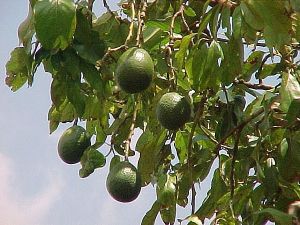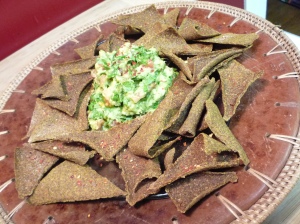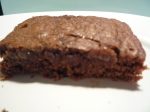 We have been told to avoid the avocado because of its “high caloric and fat content”.
We have been told to avoid the avocado because of its “high caloric and fat content”.
Aside from being very high in fiber, avocados provide essential nutrients such as A, B-complex, C, E, H, K, and folic acid, plus the minerals magnesium, copper, iron, calcium, potassium and many other trace elements. They also provide all of the essential amino acids our bodies need plus 7 fatty acids, including Omega 3 and 6.
 Avocados contain more protein than cow’s milk.
Avocados contain more protein than cow’s milk.
Avocados contribute nearly 20 vitamins, minerals and phytonutrients. Phytonutrients are thought to help prevent many chronic diseases.
In place of other heavier animal fats, avocados can be a satisfying addition to a low-calorie, healthy diet. Avocados can actually help you LOSE weight!
The Aztecs used the avocado as a sex stimulant, and archeologists have found the avocado seed buried with Peruvian mummies dating to 750B.C.
Early Americans called it the alligator pear, because they could not pronounce the Spanish word for avocado, ‘aguacate’.
European sailors called it “Midshipman’s Butter,” because they liked to spread a rich, guacamole-like substance on biscuits.
There are eight varieties of avocado grown in the US, but the Haas variety remains the most popular. It’s hard, textured skin makes it easier to ship and when it turns dark consumers can be sure it is ripe.
From San Luis Obispo to San Diego California is the largest growers of U.S. consumed avocados. San Diego County calls itself the “avocado capital” of the world. You may find a few in Florida but 95 percent are from CA.
In his book The Sunfood Diet Success System, David Wolfe, founder of Sunfood Nutrition writes about avocado oil being closely related to our skins natural oil. As a veteran professional beauty consultant I have used avocados and avocado oil for dry hair and skin treatments on many clients. You will often see cosmetic products claiming the use of avocado oil as their miracle cure. Hey, there’s a produce stand or grocery store near by, why not just use fresh, unprocessed avocados for the overwhelming health benefits in side and out!
I use avocados in many recipes ranging from chocolate mousse and cupcake frosting to wraps, spreads, dips and dressings. Any day of the week you can find avocados in my kitchen. I’ve even been known to take them on the go with me and enjoy them with lemon pepper as a nutritional mid day snack.
Purchase avocados unripe and let it ripen at room temperature. When the narrower tip (blossom end) is soft to the touch, it is ready to eat and it should be eaten promptly. They will not ripen in cold.
Here’s my quick and easy guacamole ‘go-to’ recipe. I often have my 4 year old son mash the avocado and stir in the seasonings. You can vary it according to your tastes and mood.
Ingredients
4 to 5 large avocados
2 fresh limes
1 medium white onion, diced (or onion powder or dried onion for flavor if you don’t have fresh)
3/4 cup cilantro, chopped finely
1 large tomato, ripe but firm, diced
1 fresh jalapeno, finely chopped (optional)
dash cumin
pinch sea salt
Mash avocados in a bowl. I enjoy the chunks of fresh avocado so I lightly smash them rather than make them creamy.
squeeze in 1 lime. Add the rest of the ingredients and stir. If needed squeeze in the second lime. Adjust to your taste.
Hint; if you save the seed and put it in the bowl your guacamole will stay fresh longer while stored in airtight container.
Oh, and by the way, those crispy amazing chips are home made and RAW! 🙂





